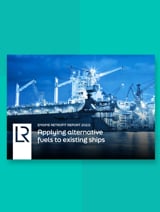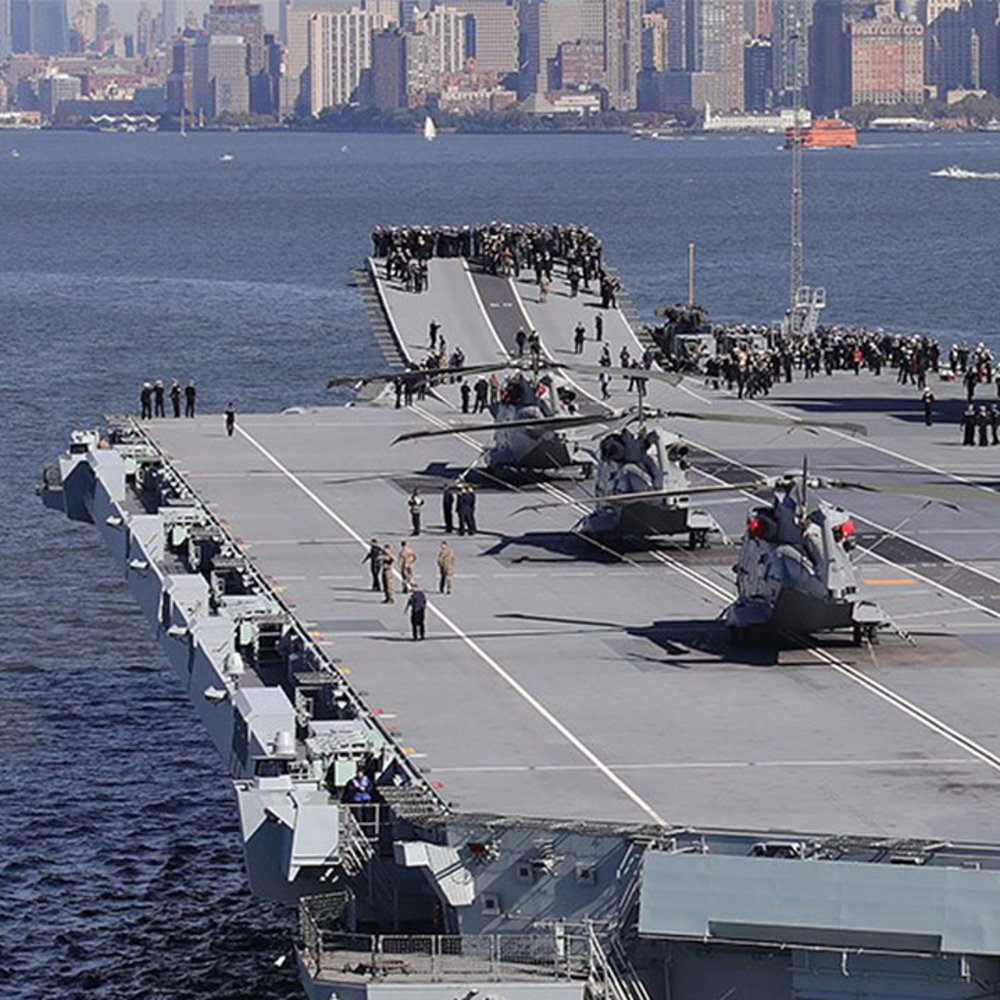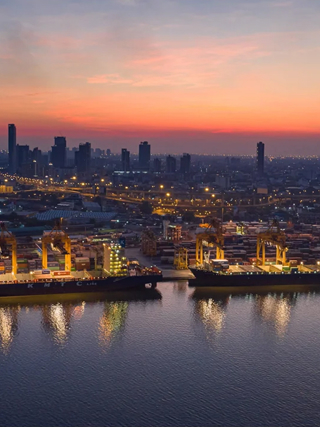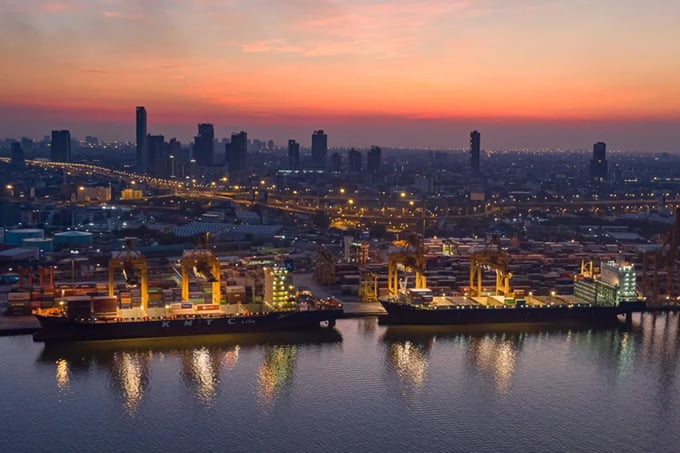Thought leadership, maritime insights and expert advice from Lloyd’s Register.
Significant opportunities exist in this specialised arena as more nations seek to bolster their maritime defence forces.
Smuggling, piracy, border disputes and broader geopolitical issues are just some of the factors underpinning substantial naval investment around the world, estimated recently at about $320 billion over the next three years. David Lloyd, LR’s Global Naval Business Director, sees great potential. “There are significant opportunities to work even more closely with the defence sector and support our clients’ evolving strategies and requirements,” he says, “and build on the long track record we already have in this arena.”
Unusually for a classification society, LR has a strong presence in the naval business. Assurance providers usually stick to the commercial shipping market since naval vessels are exempt from conventional maritime regulations, including IMO Conventions, Codes, and flag Administration regulations. Neither do they have to be ‘classed’ in the same way as merchant ships, although many are these days.
Class a preferred option
Lloyd reveals that many navies increasingly opt to have their vessels built to, and maintained in, class on a voluntary basis for a couple of reasons. One, they see the benefits of being able to tap into the latest technical capabilities of a class society, not only during construction but through the lifetime of an asset. And two, they see it as a means of keeping abreast of rapidly accelerating technology developments in the commercial sector, which could become valuable in a naval setting in future.
Although LR’s pedigree in naval business stretches back more than 150 years, it is over the past three decades that it has become a sector of key strategic focus. It was at the UK Ministry of Defence’s request that the classification society developed and published the first set of Naval Ship Rules in 2000. Since then, naval business has grown steadily and Lloyd, who joined LR in 1999 following a 16-year spell as an officer in the Canadian Navy, believes there is significant scope for further expansion.
This, he explains, is because classification society assurance is now seen by many defence authorities as an essential component of establishing and operating a modern navy. Lloyd points out that support craft, auxiliaries, patrol boats and coast guard vessels are increasingly built in commercial shipyards because dedicated naval dockyards have been closed down. Plus, the latest advances in commercial technologies are assessed and assured primarily in classification society rules and flag Administration regulations, so it makes sense to use class rules as the basis for ensuring appropriate functionality and safety.
Over the past three decades, Lloyd reveals, LR has classed more than 400 naval vessels on behalf of 19 navies. Of these, 190 were built to Naval Ship Rules. Many ships are currently maintained in class, on behalf of 13 navies.
They include both combat vessels such as aircraft carriers, corvettes, destroyers and frigates, and support vessels such as auxiliary oiler/replenishment ships, landing platform dock ships, landing helicopter dock ships and air cushion vehicles. LR does not classify submarines but undertakes design reviews and provides assurance services on submarine components and systems.
Technology transfer
There are several strands to the expansion that Lloyd and his team are pursuing, but perhaps the most important is the issue of technology transfer. “For good reasons, navies tend to be risk-averse and must ensure that they have proven technology on their vessels. And since navies tend to modernise every 15-20 years, they usually start out from behind the technology curve.
“Although, for example, they are looking at new fuel technologies in a limited way, it is very unlikely navies will be taking the lead in the development of LNG, methanol, ammonia or hydrogen. There will eventually be lots of cross-over, but it will take time. As a classification society, we are already heavily engaged in these technologies and can provide continuing guidance on the latest state of play.”
Independent scrutiny
Another key aspect of the value that LR brings to navies is due diligence. Lloyd reveals that, these days, many governments face a huge amount of public scrutiny over how they spend their money… more so, by far, than commercial entities. Independent advice is often required in relation to naval export construction – often of non-combatant, auxiliary vessels – but particularly on in-country naval spending.
Here, Lloyd points out, a range of factors, other than value for money, may well come into play. They include job creation, technology transfer and the protection of national infrastructure and security. “In these cases, the overall cost of building the naval ship itself becomes only one aspect to the overall policy or political objectives of the government in power,” he points out. “In this case, due diligence can be demonstrated in many other ways than simply low-cost, on-time procurement – such as being able to independently demonstrate that a naval ship is fit for purpose and safe.”
Lloyd also sees a growing requirement for environmental assurance in the future. He believes that navies will eventually have to demonstrate an equivalent level of environmental stewardship to that of commercial fleets, although they will not necessarily be compelled by statute to do so. “Therefore we will have an essential role to play in the transfer of technical and environmental knowledge from commercial shipping to the naval sector.”
In conclusion, Lloyd highlights the scale of global naval spend estimated from August 2019 to the end of 2023 – a total of $319 billion (see chart opposite). Close to half of this involves construction projects in Asia, Australia and NATO countries, regions in which LR already has naval business in place.
“Growing geopolitical instability around the world is driving new naval ship construction business,” Lloyd declares. “And since more navies are now realising the added value that we, as a classification society, can bring, I think there is a fantastic opportunity.”
Merchant versus military shipbuilding – no easy switch.
As the world economy absorbs the aftershocks of COVID-19, shipyards face serious challenges. The orderbook is shrinking, cruise building facilities are in crisis, offshore construction has slowed, and shipbuilders are competing all-out for any routine business that’s going.
At first sight, developing a naval construction capability might seem a business strategy worth examining. Many governments require a steady supply of frontline combat vessels and support ships and, as global relations become more fractious, defence spending is only likely to go one way.
There are certainly opportunities, and LR is already engaged in a broad range of naval projects across various regions including Europe, Canada, South America, the Middle East, South East Asia and China. Some of these involve shipyards with a dual capability – merchant and military construction.
But David Lloyd, LR’s Global Naval Business Director, warns that it’s really not as simple as it seems. And expert guidance is a precursor for any strategic move by a commercial shipbuilder into defence-related construction, he says.
“For shipyards building relatively simple commercial vessels, it’s a major step to construct combat ships and supporting naval craft,” he explains. “It involves a signifiant investment and I’d say it would be a formidable challenge for a traditional builder to switch to construction of complex naval ship. LR would be well-placed to help in such a transition but the approach to both design and construction are considerably different.”
Lloyd explains that one of the key differentiators is that naval vessels do not have to comply with the same regulatory requirements as commercial ships. They don’t have to comply with IMO Conventions or Codes, and they are not “flagged” by flag Administrations either, so in many cases there may be no regulatory authority to consult on design issues such as stability, fire safety or life-saving requirements.
“So naval vessels are built in a unique way, and some of the standard terms of reference in merchant shipbuilding do not apply,” Lloyd says. “Naval ships – both combat and support vessels – may be built to far more exacting designs and standards with which non-naval shipyards have little or no familiarity or experience.
“Unlike many commercial vessels, which are built as quickly and efficiently as possible for one task – carrying oil, bulk cargo or containers – and to maximise return on investment for their owners, naval ships are multifunctional, with front-line roles as well as routine operations including continuous surveillance and humanitarian assistance. They take years of planning and construction and their ultimate cost is often not known accurately in advance.
“Design focus is on survivability,” Lloyd says. “Ship systems require robust redundancy. Multiple main engines and two separate shaft lines may be needed, as well as structural blast and shock protection, for example, considerable watertight subdivision, shielding against electromagnetic interference, main systems redundancy, and overall survivability in a conflict. Support craft are not as complex, but nevertheless must be built to function as expected and as safely as possible in a combat environment.”
Lloyd emphasises one area of design and construction in which leading classification societies have a role to play. Technological innovation is gathering pace and LR, for example, is engaged in a range of development projects in the commercial sector – from new fuels and propulsion technologies to power storage, digital twins, autonomy and remote operations.
Despite the challenges, however, Lloyd believes that some commercial yards are capable of making the transition, and shipbuilders with experience in the construction of complex ship types probably head the list. He cites shipyards with experience of technologically sophisticated cable- and pipe-laying vessels, with advanced position-keeping capabilities, and multi-role offshore support vessels.
In conclusion, Lloyd says: “It is worth noting that shipyards capable of designing and delivering highly specialised commercial vessels that are technologically sophisticated are likely more able to make the transition into naval or coastguard ships than shipyards which are focused on more traditional tonnage construction. However, it is not an easy task for any commercial builder.”








